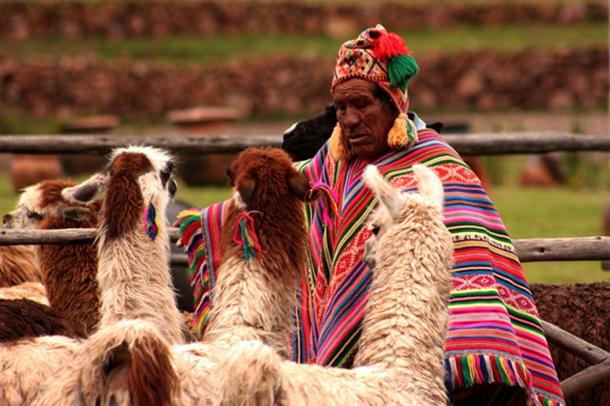
Ten of the Most Critically Endangered Languages in the World
There are 195 countries in the world, but a staggering 7000 living languages. UNESCO’s list of endangered languages, which functions in a similar way to the lists for endangered animals and plants, with a sliding scale ranging from “vulnerable” to “extinct” - has predicted that more than half of these languages will be extinct by 2100.
At a time when ways of communicating with one another have never been so widespread and learning a new language is as simple as downloading an app like Duolingo, it may seem unfathomable that something as intrinsic to a society could be lost. But there are many ways a language can go extinct and as it is estimated that one language goes extinct every 14 days, it may be unavoidable that some of the more unusual living languages are doomed to be lost.
How Do Languages Become Endangered?
An endangered language, also known as a moribund language, is defined by UNESCO as one which is not being taught by parents to their children and is no longer being spoken in day to day life. They consider this type of language as critically endangered, if the only surviving speakers are a few elderly members of its native society.
Languages are at risk of becoming endangered if they are under a large amount of external pressure. A clear example of this is the vast number of extinct or endangered Indigenous languages in North America. More than half of the original Indigenous languages were wiped out due to the massacre of indigenous people when America was colonized, but in 1994 there were estimated to be 155 remaining Indigenous languages in the United States. 135 of these were classed as endangered, as young Native Americans are increasingly raised speaking only English, and only a tiny percentage of the languages are being passed on to the younger generation. In 2016 a census of the United States revealed that 73% of Native Americans aged 5 and over spoke only English.

Teacher with picture cards giving English instruction to Navajo day school students. (US National Archives / Public Domain)
As a large number of the languages on the endangered list have only a spoken form, it can become impossible to pass on the knowledge of how to speak them as the number of speakers dwindles to just a few elderly people. If there is no written form, or it dies out before a linguist has the chance to intervene, there is nothing that can be done to preserve a language that has reached the critically endangered stage. Sadly, as some tribes or ethnic groups assimilate into larger cultures or die out altogether, their languages are lost forever.
What Effect Does a Language Going Extinct Have?
On the surface it may seem unimportant if a language dies out because it has been replaced, but a language holds far more power than the ability to communicate in the here and now. Languages are a defining feature of unique and fascinating cultures with rich and captivating heritages.
Anyone who has studied Greek philosophy will know that there is often a great deal of variation in the translation of surviving texts and the differences can be the root of a lot of animosity within the field. Translating a single word differently can completely change the meaning of a sentence. Even today it can be impossible to translate a text without a native speaker to help with the nuances and subtleties of the original writing.

Terracotta tablet with a Greek inscription in Cypriot syllabic script. (Aa77zz / CC BY-SA 2.0)
This means that the fables, chronicles, sayings, and metaphors which make up the heart of a culture can be totally lost if their original language dies out. It is these things that allow us to fully understand what makes a culture unique.
Ten Dying Languages
Resígaro:
Resígaro is an Amazonian language native to Peru with only one surviving speaker. After the last surviving female speaker was murdered in 2016, her brother was left as the last remaining speaker of the language. With only one speaker left, Resígaro is possibly the most endangered language on the planet, though Pablo Andrade, it’s lone speaker, has been undertaking a project to try and document the language since 2016.
Chamicuro:
Another Peruvian language on the critically endangered list is Chamicuro. The language may already have been fully usurped by Spanish, but in 2008 researches believed there were 8 surviving speakers. Sadly, it seems like it may be too late to preserve Chamicuro.

Indigenous Peruvian man. (FredWanderley / Public Domain)
Ngan’gikurunggurr:
A 2016 census found 26 surviving speakers of the Indigenous Australian language Ngan’gikurunggurr, indicating it is likely to go extinct imminently. However, researchers believe there may be as many as 200 remaining speakers and due to a great deal of research being done on the language (Glottolog lists 27 academic papers) it is perhaps more likely than the rest of the languages on the list to survive, even if it is only on paper.
Alawa:
Another Aboriginal Australian language, Alawa – also known as Galawa and Waliburu - had 18 remaining speakers in 1994, but this had dwindled to 4 in 2016. It is highly likely that the 4 remaining speakers will be the last to use Alawa and it will go extinct in the next few years.

Aboriginal woman and men in Australia. (Rafael Ben-Ari / Adobe)
Ainu:
With fewer than 15 speakers left, all of whom are elderly, the Japanese language of Ainu is classed as critically endangered. Thankfully, there are efforts underway to revive it and although it is still in danger of going extinct, it may not be too late to preserve for future generations.
Dumi:
The Nepalese language Dumi was reported as having 200 speakers in 2007. It is likely that this language will go extinct because parents who spoke the language did not encourage their children to learn it, which is unfortunately how a lot of languages are lost.

Nepalese children. (Eric Montfort / CC BY-SA 2.0)
N|uu:
N|uu is a language spoken by seven people in South Africa. Originally spoken by the Khomani people, it is an example of a language under pressure from external sources as most of the Khomani now speak Afrikaans.
Yuchi:
While some endangered languages are related to less vulnerable languages, Yuchi is unique. The Native American language had only 4 speakers in 2013, but there are attempts to preserve it and it is being recorded on video to achieve this.
Ter Sami:
Ter Sami is a language spoken by around ten people in Russia. It has been almost entirely replaced by Russian. There are some incomplete records of the language, but it is at high risk of extinction.
Chulym:
Chulym is the language of the Chulym Tatars, a Turkic people in the Tomsk Oblast and Krasnoyarsk Krai in Russia. According to census figures in 2010, there were only 44 remaining speakers of the language, which they call Öс, the youngest speaker being 54 at that time. It is predicted that the language will be extinct by the 1930s.
- Europeans share more language and genes with Asia than previously thought
- How to Invent a Tolkien-Style Language: Ancient Languages Inspire Modern Movies
- More Revelations From St. Catherine’s Monastery Include Lost Ancient Languages

Zoya Gerasimova, left, one of the last speakers of Ter Sámi, photo taken in 2006. (FResearchGroup / CC BY-SA 3.0)
The Inuit famously have fifty words for snow and the huge number of words is indicative of how important snow is to their society and values. Losing their language or translating a legend only with the word ‘snow’ would erase the significance of snow to them and alter the way we perceive their society. It is the same with every language on the endangered list and it is unfortunate that so many aspects of these cultures are doomed to be lost to us. Thankfully some of these languages may be able to live on now we have the technology to capture them and due to a shift in attitudes towards embracing and protecting the things that make societies unique.
Top image: Amazonian native (gustavofrazao)
References
AIASTIS. Date unknown. N92: Alawa. [Online] Available at: https://collection.aiatsis.gov.au/austlang/language/N92?code=N92
Aulakh, R. 2013. 11 languages at risk of disappearing. [Online] Available at: https://www.thestar.com/news/world/2013/04/15/11_languages_at_risk_of_disappearing.html
Aulakh, R. 2013. Dying languages: scientists fret as one disappears every 14 days. [Online] Available at: https://www.thestar.com/news/world/2013/04/15/dying_languages_scientists_fret_as_one_disappears_every_14_days.html
Crawford, J. 1994. Endangered Native American Languages: What Is To Be Done, And Why? [Online] Available at: https://ncela.ed.gov/files/rcd/BE021828/Endangered_Native_American.pdf
Glottolog. Various dates. Language: Ngan’gikurunggurr. [Online] Available at: https://glottolog.org/resource/languoid/id/nang1259
Koyfman, S. 2017. What Was, And What Is: Native American Languages In The US. [Online] Available at: https://www.babbel.com/en/magazine/native-american-languages-in-the-us/
Robson, D. 2013, There really are 50 Eskimo words for ‘snow’. [Online] Available at: https://www.washingtonpost.com/national/health-science/there-really-are-50-eskimo-words-for-snow/2013/01/14/e0e3f4e0-59a0-11e2-beee-6e38f5215402_story.html?utm_term=.c1e51bc747e4
















Comments
The information in this article is around 10 years old. Since the old references also rely on dated information.
Some of these languages are already functionally dead. They no longer have any native speakers well enough to teach the next generation. Or their native fluency is suspect.
As for documentation, they all have some to varying degrees, but we don't consider an endangered language "saved" once we get a couple recordings done.